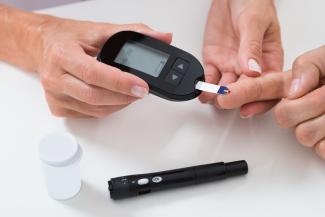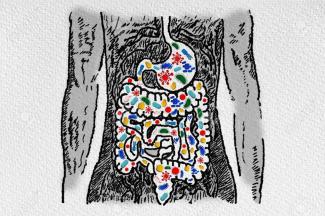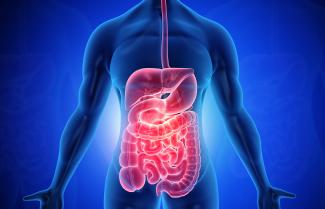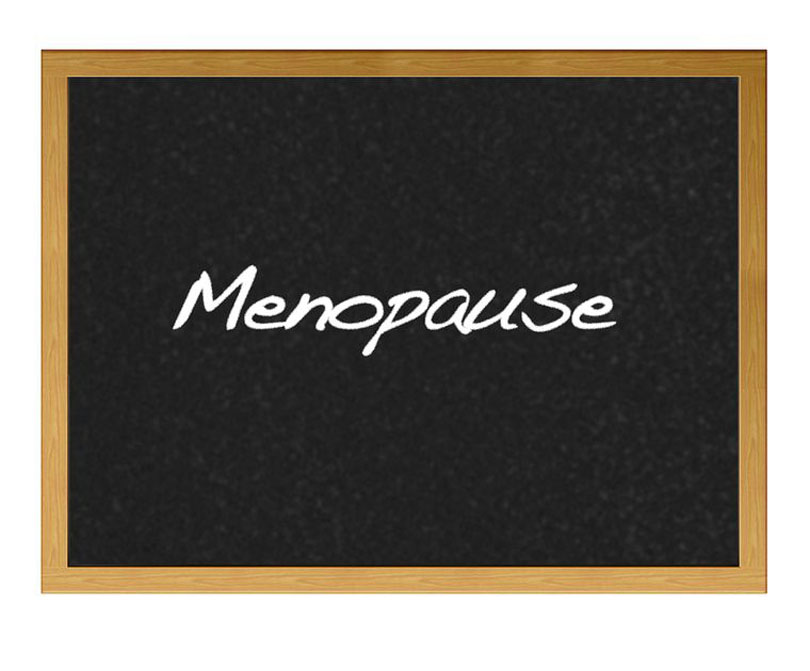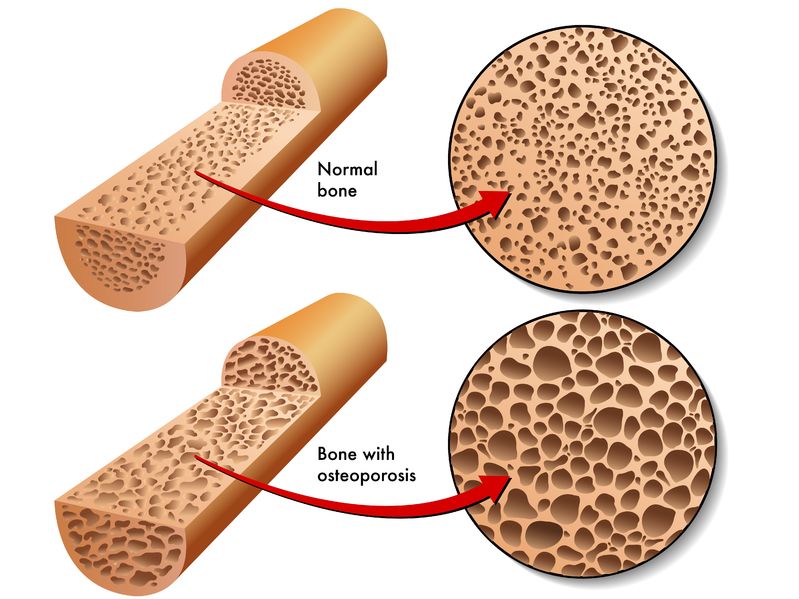Reversing Metabolic Syndrome Using Natural Medicine
What is Metabolic Syndrome or Syndrome X?
Metabolic syndrome is a cluster of risk factors that increase one’s chances of developing serious illnesses in the future. Metabolic syndrome doubles the chance of developing cardiovascular disease while increasing the risk of diabetes, fatty liver, and several types of cancers (1)(2). It is diagnosed by having three or more of the following symptoms (3):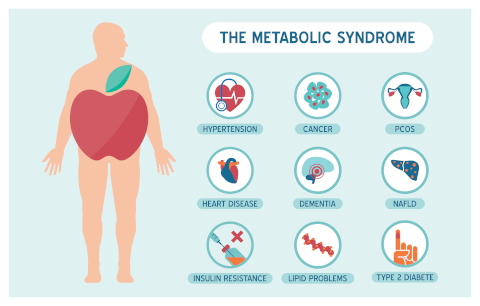
- High fasting blood glucose levels: ≥100 mg/dL (or receiving drug therapy for hyperglycemia)
- High blood pressure: ≥130/85 mm Hg (or receiving drug therapy for hypertension)
- High triglyceride levels: Triglycerides ≥150 mg/dL (or receiving drug therapy for hypertriglyceridemia)
- Low high density lipoprotein (HDL) levels: < 40 mg/dL in men or < 50 mg/dL in women (or receiving drug therapy for reduced HDL-C)
- Large waist circumference: ≥102 cm (40 in) in men or ≥88 cm (35 in) in women; if Asian American, ≥90 cm (35 in) in men or ≥80 cm (32 in) in women
When a patient presents with these risk factors together, the chances for future cardiovascular problems are greater than any one factor presenting alone.
What Causes Metabolic Syndrome?
Inflammation
Low grade inflammation has been linked to the cause of many serious health conditions such as (4):
- Diabetes
- Coronary Heart Disease
- Stroke
- Depression
- Spontaneous Pre-term Birth
As well as more common and pervasive conditions (5):
- Leaky gut
- Cognitive impairment
- Fatigue
- Sleep problems
- Pain
There are many ways the body develops low grade inflammation. The western lifestyle, characterized by lack of exercise and a diet rich in refined foods, is the most likely culprit (6). These habits lead to obesity, high blood pressure, increased triglycerides, insulin resistance and high blood sugar; the collection of symptoms that make up Metabolic Syndrome. Obesity promotes inflammation via chronic activation of the immune system (7). Exercise increases skeletal muscle which acts as an endocrine organ by increasing the metabolism in those tissues and modifying the immune system. Sedentary patients who engaged in a 20 week aerobic exercise regime saw a reduction in their C-reactive protein, a common marker of inflammation (8). Eating processed and refined foods leads to inflammation.
Here is a list of inflammatory or refined foods common to the Western Diet:

- Sugar- granulated sugar, white, brown, high fructose corn syrup
- Saturated Fats- cheese, red meat, full fat dairy
- Trans-Fats- fast food, fried products, processed snack foods: cookies, donuts, margarine
- Omega 6 Fatty Acids- corn oil safflower oil, canola oil, grapeseed oil, soy, peanut, vegetable oils, mayonnaise, store bought salad dressing
- Refined Carbohydrates- white flour products, white rice, white potatoes, breakfast cereals
- Alcohol
- MSG
- Gluten- this is the protein found in many grains such as: wheat, barley and spelt.
- Casein- the protein found in whey.
- Aspartame
- GMO- genetically modified foods have had their organic structure modified for a production or profit purpose. They contain genetic structures our bodies haven’t seen before and aren’t equipped to metabolize properly. Non-metabolized food sits in our gut and gets fermented by bacteria leading to bacterial dysbiosis.
Eating these foods leads to chronic inflammation in the gut affecting the tight junctions between the cells causing them to separate. When this happens, small food particles leak out into the tissues activating the immune system. Food particles in our tissues look like a foreign invader to our immune system that reacts to protect us. Unfortunately the immune system doesn’t forget, and unless we treat our “leaky gut”, our body develops a consistent allergic reaction to these common foods.
How to Cure Metabolic Syndrome
Detoxification and lifestyle changes reverse metabolic syndrome. Treatment involves decreasing your weight, eating heart healthy foods, managing blood glucose, cholesterol, and blood pressure using diet, exercise and supplements. Treatment principles are:
1. Stop low-grade inflammation
2. Decrease weight
3. Lower triglycerides
4. Increase HDL
5. Lower blood sugar/improve insulin sensitivity
Stop Low-grade Inflammation
Removing all of the processed and refined foods listed above is the best first step you can take to reducing low grade inflammation. Eating a diet of fresh, organic fruits, vegetables, nuts, seeds, herbs and healthy fats is the basis of an anti-inflammatory diet. Bright colored foods contain flavenoids which are highly effective antioxidants. They scavenge the free radicals, that cause damage to tissues and blood vessels, reducing inflammation. Antioxidants are in brightly colored foods such as berries, red grapes, apples, citrus fruits, kale, broccoli, pumpkin, parsley, thyme, oregano, celery, green tea, and peppers (9).
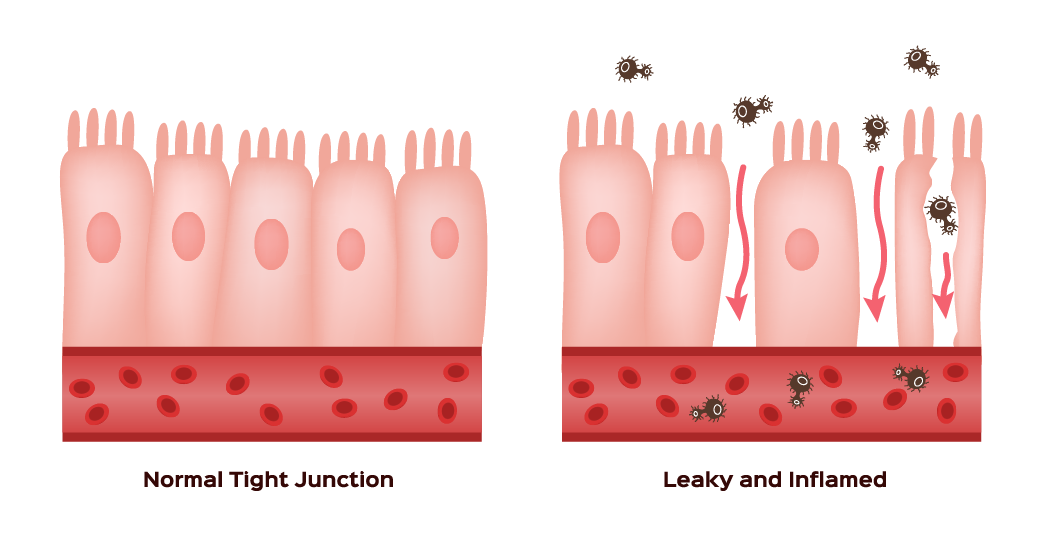
Healing a leaky gut is an important step to decreasing low-grade inflammation. Determining food allergies can be diagnosed using a food elimination/reintroduction protocol or a blood test. The food elimination/reintroduction protocol works by removing allergenic foods for 3-6 months, while adding in probiotics, L-glutamine and fish oil to heal the gut. Once the symptoms of food allergies have decreased, foods are added in one by one to observe the reaction and determine the allergenic foods. Alternatively there are labs that do an IgG/IgE food allergy panel which measures your immune response to dozens of different foods.
Resveratrol, found in the skin of grapes has been shown to lower low-grade inflammation as well as decrease the associated bone loss (10)(11). Omega 3’s found in fish and flax oil have numerous studies showing their ability to reduce inflammation, cardiac events, improve ulcerative colitis, autoimmune arthritis and reduce tumors (12) (13). Exercise, as mentioned above, helps to reduce the inflammation in the body by increasing the metabolism in the tissues. Not to mention it lifts the mood!
Lowering Blood Pressure
Diet can often be enough to lower blood pressure. Eliminating salt intake is the first step to decreasing your blood pressure naturally. Be mindful to eliminate processed foods which have high sodium content. Nutritional supplements can help to lower blood pressure. Arginine is an amino acid that lowers blood pressure by increasing the production of nitric oxide. Exercise lowers blood pressure by making your heart stronger and more efficient. Mild exercise of walking 30 minutes per day lowers systolic blood pressure by 4-9 points (14). Exercise must be done on a regular basis for 1-3 months to see an effect. Exercise can lower stress, a predictor of high blood pressure, because it releases pent up energy from high intensity situations or emotional circumstance (15).
Stress management begins by assessing your life and determining your stressors. Applying positive coping mechanisms for the individual stressors is key. Whether it is eliminating a thought process, circumstance or relationship from your life, stress management is an important factor in lowering blood pressure. Restructuring how you interpret situations and other people’s actions is a great way to take control of your thoughts which are, for the most part, our source of stress and suffering in the western world.
Losing weight starts with eliminating non-nutritious foods and incorporating healthy food choices listed above. When losing weight is combined with exercise, they are more effective at reducing blood pressure than exercise alone (14). Other effective ways to lose weight include juice and water fasting combined with nutritional education so weight is not put on after the treatment. Many of the environmental toxins we store are fat soluble. When we break down this tissue, the toxins are mobilized and need to be excreted. Eating a diet high in fiber can help to bind toxins for elimination. Infrared saunas and skin brushing help to detox the body during toxin mobilization. Remember to wipe your skin off after a sauna to remove toxins from the surface of the skin.
Increasing HDL + Lowering Triglycerides
All fats are not created equal. The western diet is full of omega 6 oils found in processed and fried foods. Ideally our diet should be 1:1 ratio of omega 6 to omega 3 fatty acids. Studies have shown anywhere from a 10:1 ratio existing in society to a 25:1 ratio. Omega 3 fatty acids are an important nutrient for the body. They lower cholesterol, reduce inflammation, prevent heart disease, improve autoimmune conditions and irritable bowel disease, and enhance cognition. Omega 3’s are in the highest concentration in fish oils. It is best to have a ratio of EPA to DHA 3:1. Studies have shown that 4 g of fish oil is required to lower cholesterols (triglycerides and LDL). Good dietary fats can be found in organic avocados, coconut meat, flax oil and nuts.

B vitamins lower cholesterol especially B3 also known as niacin. Niacin has a flushing quality which is useful for lowering cholesterol. It has to be taken in a high dose beginning at 500 mg. It is titrated up to a maximum of 3 g. Niacin can lower triglycerides and increase HDL. Pantethine, vitamin B5, lowers total cholesterol and LDL levels when taken consistently for 16 weeks. Vitamin E is made up of 2 different groups: tocopherols, and tocotrienols. Tocotrienols have been shown to reduce blood pressure, plasma glucose levels, obesity and improve lipid profiles and therefore protect the heart and liver. Because they increase insulin sensitivity as well as glucose uptake, they are useful to lower the blood glucose found in Metabolic syndrome. Carnitine is an amino acid derivative that has been shown to reduce oxidized LDL cholesterol, and increase HDL.
Decreasing Blood sugar, improving insulin resistance
Blood sugar can be well regulated by a raw food diet which is high in fiber and low in simple or refined carbohydrates and refined sugar. Without the spikes in blood sugar from processed foods and refined sugars, with the added benefit of fiber from raw fruits, vegetables, nuts and seeds, the body metabolizes and absorbs carbohydrates properly. An inconsistent rising and falling of blood sugar from processed foods burn out the cells of the pancreas responsible for secreting insulin. As the blood sugar becomes more regulated, the insulin sensitivity returns to the cells and the pancreas heals. Carrot Juice fasting is a tool we use to help regulate and heal blood sugar dysregulation issues such as Type ll Diabetes.
Maca is the root of a Peruvian plant that significantly decreases the levels of LDL cholesterol, total cholesterol, and triacylglycerols in both the blood and liver and increase glucose tolerance factor. It also acts as a free radical scavenger which protect against the oxidative stress caused by the pro-oxidation process of diabetes.
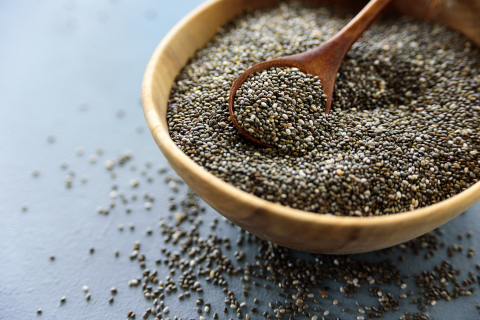
Chia seed is a powerhouse of nutrients, protein, omega 3 fatty acids and fiber. The fiber + protein in chia helps to slow the absorption of carbohydrates and regulate blood sugar. It has been shown to lower blood pressure in diabetics, decrease inflammation, blood sugar and improved blood viscosity leading to improved cardiovascular health. Chia seeds prevent glucose spiking after meals.
Minerals such as chromium, zinc and vanadium are essential in the treatment of blood sugar issues. Chromium is a mineral that improves blood sugar regulation and insulin sensitivity by supporting Glucose Tolerance Factor in cells. Vanadium is an insulin mimic, helping to remove glucose from the blood and into the tissues where it is used to power the reactions in the cells. Zinc is used in all insulin reactions.
Herbal medicine is used to control blood sugar and improve insulin sensitivity. Cinnamon Cassia and Zeylenicum work to lower blood sugar, triglyceride and LDL cholesterol. They are a good addition to any dessert or morning smoothie. Fenugreek acts on the adrenal glands to lower blood glucose. Gymnema can help stimulate insulin secretion and improve blood glucose control.
Metabolic disease can be reversed using naturopathic medical principles and treatment.
References:
1. Gami AS, Witt BJ, Howard DE, et al. Metabolic syndrome and risk of incident cardiovascular events and death: a systematic review and meta-analysis of longitudinal studies. J Am Coll Cardiol. 2007 Jan 30. 49(4):403-14. [Medline].
2. Giovannucci E. Metabolic syndrome, hyperinsulinemia, and colon cancer: a review. Am J Clin Nutr. 2007 Sep. 86(3):s836-42. [Medline].
3) Grundy SM, Cleeman JI, Daniels SR, et al. Diagnosis and management of the metabolic syndrome: an American Heart Association/National Heart, Lung, and Blood Institute Scientific Statement. Circulation. 2005 Oct 25. 112(17):2735-52. [Medline].
4) Moutsopoulos, NM, Madianos, PN. Result Filters. National Center for Biotechnology Information. Available at: http://www.ncbi.nlm.nih.gov/pubmed/17192571. Accessed October 24, 2015.
5) Lasselin, J, Capuron, L. Result Filters. National Center for Biotechnology Information. Available at: http://www.ncbi.nlm.nih.gov/pubmed/24557041. Accessed October 24, 2015.
6) Low-grade Inflammation - Causes. Low-grade Inflammation - Causes. Available at: http://www.wwu.edu/depts/healthyliving/pe511info/infection/causes.html. Accessed October 24, 2015.
7) Ghanim H, Aljada A, Hofmeyer D, Syed T, Mohanty P, Dandona P. Circulating mononuclear cells in the obese are in a proinflammatory state. Circulation 2004; 110: 1564-71. [Link]
8) Lakka TA, Lakka H-M, Rankinen T, Leon AS, Rao DC, Skinner JS, et al. Effect of exercise training on plasma levels of C-reactive protein in healthy adults: the HERITAGE Family Study. European heart journal 2005; 26: 2018-25. [Link]
9) Micronutrient Information Center. Flavonoids. Available at: http://lpi.oregonstate.edu/mic/dietary-factors/phytochemicals/flavonoids. Accessed October 24, 2015.
10) McCall B. Resveratrol Boosts Bone Formation in Obese Men. Medscape Medical News. Available at http://www.medscape.com/viewarticle/833807. Accessed: October 25, 2014.
11) Ornstrup MJ, Harsløf T, Kjær TN, Langdahl BL, Pedersen SB. Resveratrol Increases Bone Mineral Density and Bone Alkaline Phosphatase in Obese Men: A Randomized Placebo-Controlled Trial. J Clin Endocrinol Metab. 2014 Oct 16. jc20142799. [Medline].
12) Simopoulos, AP. The American Journal of Clinical Nutrition. Omega-3 fatty acids in health and disease and in growth and development. Available at: http://ajcn.nutrition.org/content/54/3/438.short. Accessed October 24, 2015
13) Mori, TA, Beilin, LJ. Omega-3 fatty acids and inflammation. - Springer. Available at: http://link.springer.com/article/10.1007/s11883-004-0087-5#/page-1. Accessed October 24, 2015.
14) Georgiades, A, Sherwood, A, Gullette, ECD, et al. Effects of Exercise and Weight Loss on Mental Stress-induced Cardiovascular Responses in Individuals With High Blood Pressure. American Heart Association. Available at: https://hyper.ahajournals.org/content/36/2/171.full. Accessed October 21, 2015
15) High blood pressure (hypertension). Exercise: A drug-free approach to lowering high blood pressure. Available at: http://www.mayoclinic.org/diseases-conditions/high-blood-pressure/in-depth/high-blood-pressure/art-20045206. Accessed October 24, 2015







